Introduction
In the vast realm of culinary arts, stir-frying stands as a testament to the beauty of simplicity and efficiency. This cooking technique, originating from Chinese cuisine, has since transcended borders, becoming a staple in many kitchens worldwide. Stir-frying not only preserves the vibrant colors and crisp textures of vegetables but also amplifies their natural flavors through the rapid application of heat. Among the myriad of vegetables that lend themselves well to this technique, celery stands out for its crispiness, mild flavor, and numerous health benefits.
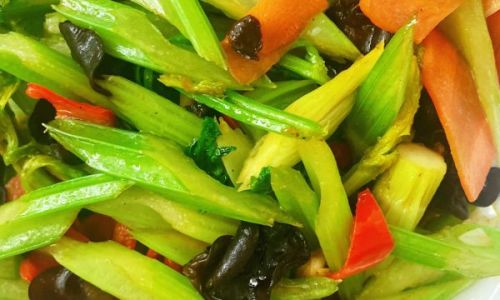
Celery, with its stringy stalks and aromatic leaves, is often underestimated in terms of culinary potential. However, when prepared correctly, it can transform into a delightful and nutritious dish that complements both meat and vegetarian meals alike. This guide aims to demystify the process of making a perfect stir-fried celery dish, ensuring that even the most novice cook can achieve restaurant-quality results at home.
Understanding Celery
Before diving into the stir-frying process, it’s crucial to understand the basics of celery. This biennial plant belongs to the Apiaceae family, which also includes carrots, parsley, and fennel. Celery is known for its high water content, making it an excellent source of hydration and fiber. Additionally, it boasts vitamins A, C, and K, as well as essential minerals like potassium and folate. Its distinct flavor, often described as slightly bitter and aromatic, stems from its volatile oils and phenolic compounds.
When selecting celery for stir-frying, look for stalks that are firm, crisp, and bright green in color. Avoid those with wilted leaves, soft spots, or discoloration, as they indicate freshness issues. For the best results, use celery as soon as possible after purchase, or store it in the refrigerator wrapped in plastic to retain moisture and freshness.
Preparing the Ingredients
The key to a successful stir-fry lies in the meticulous preparation of ingredients. Here’s what you’ll need for a basic stir-fried celery dish:
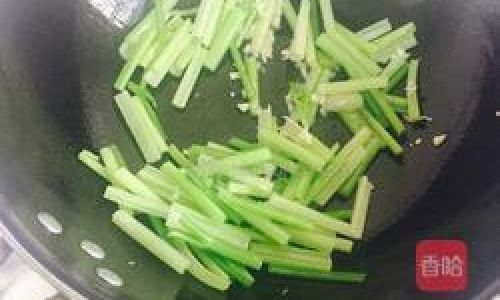
- Fresh celery: About 1 pound (450 grams), preferably with the leaves intact for added flavor.
- Garlic: 2-3 cloves, minced. Garlic adds depth and complexity to the dish.
- Ginger: A small piece, finely chopped or grated. Ginger balances the celery’s bitterness with its subtle sweetness.
- Vegetable oil: 2-3 tablespoons. Choose a high-smoking-point oil like peanut, canola, or grapeseed to ensure even cooking without burning.
- Salt and pepper: To taste. These basic seasonings enhance the celery’s natural flavors.
- Optional ingredients: Oyster sauce, soy sauce, or sesame oil for added umami; red pepper flakes or chili sauce for a spicy kick.
Step-by-Step Stir-Frying Process
Preparation of Celery
Begin by washing the celery thoroughly under running water to remove any dirt or residue. Pat it dry using a clean kitchen towel or paper towels. Next, trim off the bottom end of the stalks where they may be woody or discolored. Cut the celery into bite-sized pieces, ideally about 2-3 inches long. If using the leaves, chop them finely and reserve them for later.
Preparing the Aromatics
While the celery is being prepared, mince the garlic and chop or grate the ginger. These aromatics will form the foundation of the dish’s flavor profile, so ensure they are finely chopped to release their essences effectively during stir-frying.
Heating the Pan and Oil
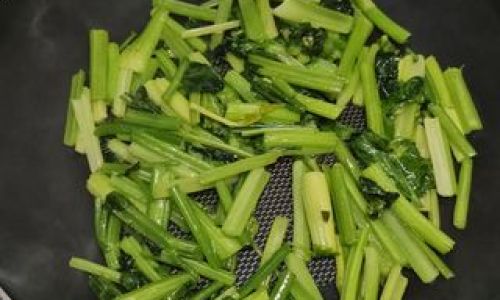
Place a wok or large skillet over medium-high heat. Once hot, add the vegetable oil and swirl it around to coat the bottom and sides evenly. The oil should shimmer but not smoke. This ensures that the vegetables will cook quickly and evenly without burning.
Stir-Frying the Aromatics
Once the oil is hot, add the minced garlic and chopped ginger. Stir constantly with a spatula or wooden spoon to prevent burning. The aromatics should turn golden brown and release their fragrant oils within 30 seconds to 1 minute. This step is crucial as it creates the flavor base for the entire dish.
Adding the Celery
Immediately after the aromatics are fragrant, add the prepared celery pieces to the wok. Stir-fry vigorously, ensuring all pieces are evenly coated with oil. The high heat will cause the celery to sear slightly on the outside, locking in juices and maintaining its crisp texture.
Seasoning and Stir-Frying
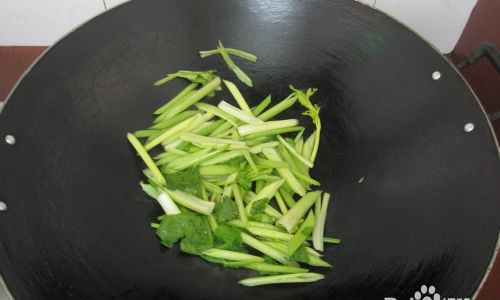
Continue to stir-fry the celery for about 3-4 minutes, or until it turns a vibrant green and becomes tender-crisp. During this time, add salt and pepper to taste. If using optional ingredients like oyster sauce or soy sauce, drizzle them in during the last minute of cooking. These condiments will add layers of umami and richness to the dish.
Finishing Touches
If desired, finish the stir-fry with a drizzle of sesame oil for added fragrance and a hint of nuttiness. Incorporate any reserved celery leaves at this stage, as they will wilt quickly and add a fresh, aromatic touch. Stir well to combine all ingredients and ensure even seasoning.
Serving
Transfer the stir-fried celery to a serving dish immediately after cooking to prevent overcooking. Garnish with additional chopped herbs like parsley or cilantro if desired. Serve hot as a side dish or incorporate it into a larger stir-fry with protein and other vegetables.
Tips for Perfect Stir-Fried Celery
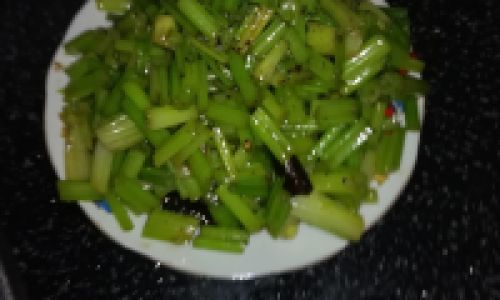
- Use a Hot Pan: The key to successful stir-frying is maintaining a high heat throughout the cooking process. This ensures that the vegetables cook quickly, retaining their color, texture, and nutrients.
- Don’t Crowd the Pan: Overfilling the wok or skillet will lower the temperature, causing the celery to steam rather than stir-fry. Cook in batches if necessary to maintain high heat.
- Stir Constantly: Vigorous stirring ensures even cooking and prevents burning. Use a spatula or wooden spoon that can reach the bottom and sides of the pan effectively.
- Season Early: Salt and other seasonings should be added early in the cooking process to allow flavors to meld and penetrate the celery.
- Experiment with Flavors: Stir-frying is a versatile cooking method that allows for endless flavor combinations. Feel free to experiment with different spices, herbs, and condiments to suit your taste preferences.
Conclusion
Stir-frying celery is a simple yet rewarding culinary endeavor that brings out the best in this underappreciated vegetable. By following the steps outlined in this guide, you can create a dish that is not only visually appealing but also bursting with flavor and nutritional benefits. Whether you’re serving it as a side dish or incorporating it into a larger meal, stir-fried celery is sure to impress even the most discerning palate. Happy cooking!



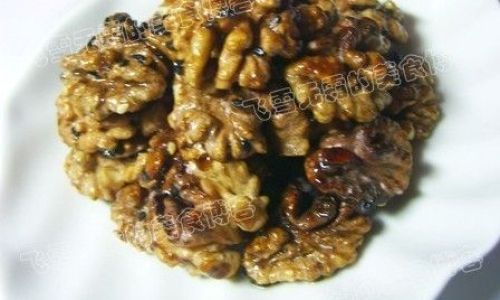


0 comments